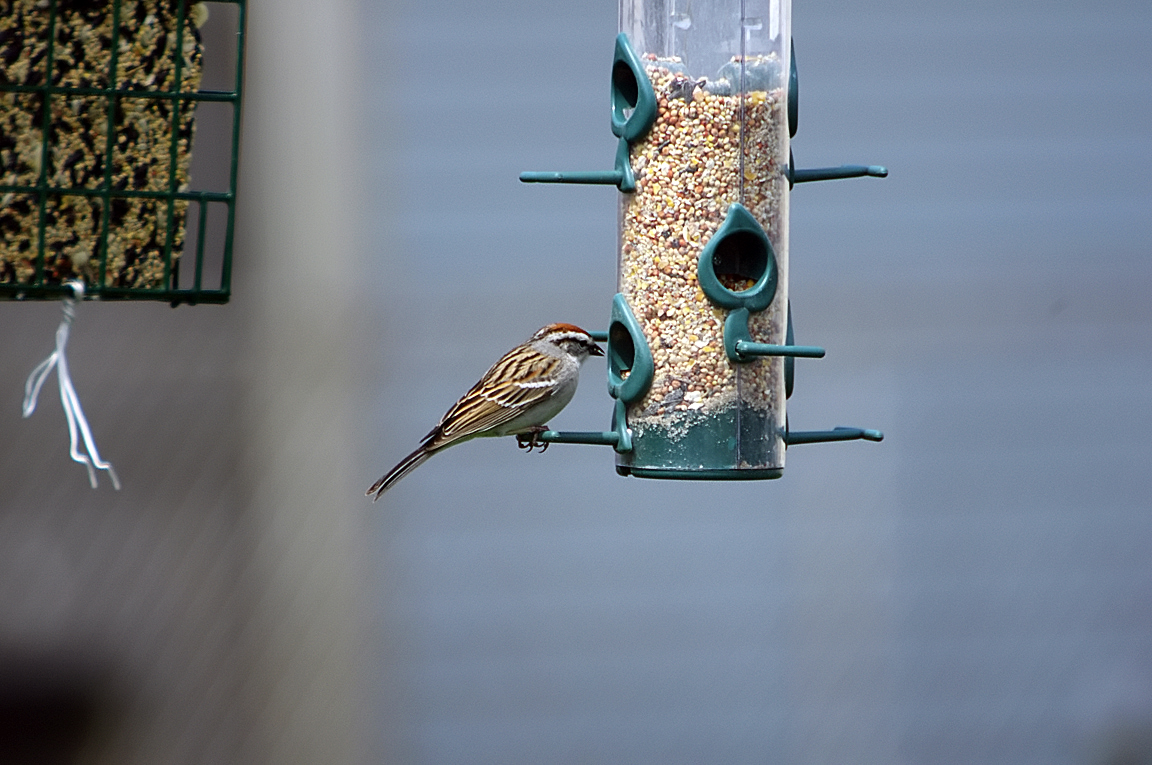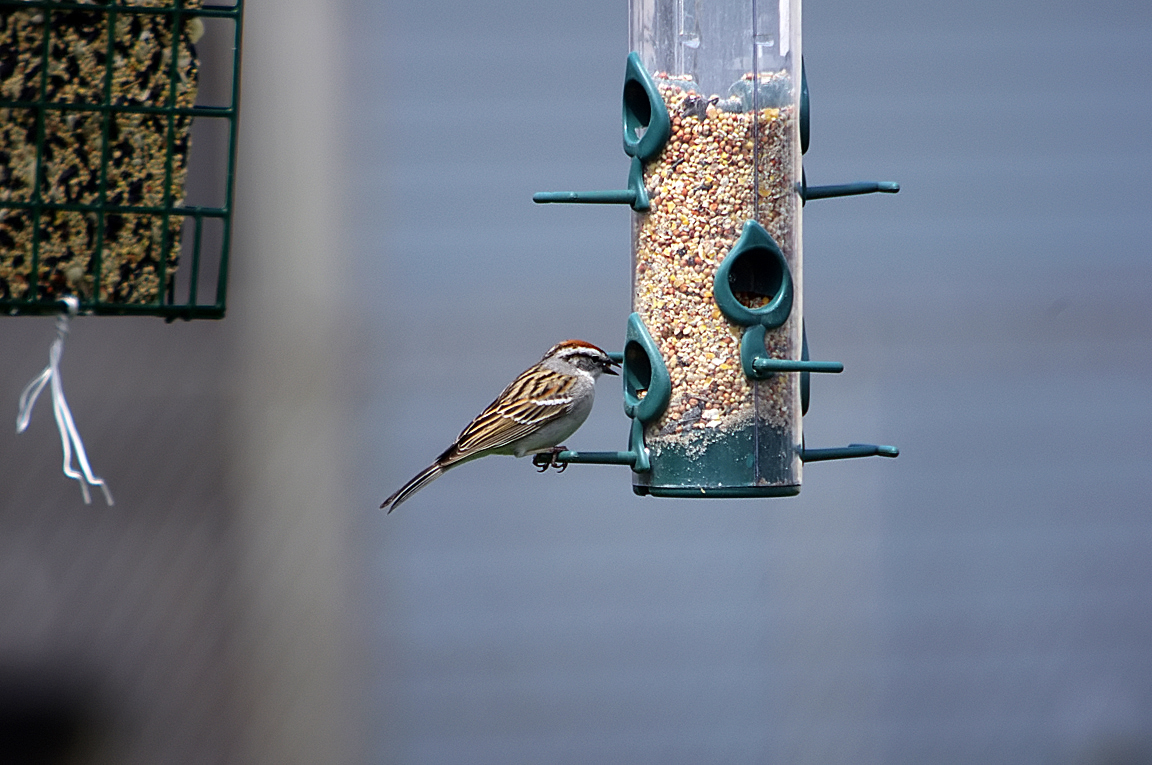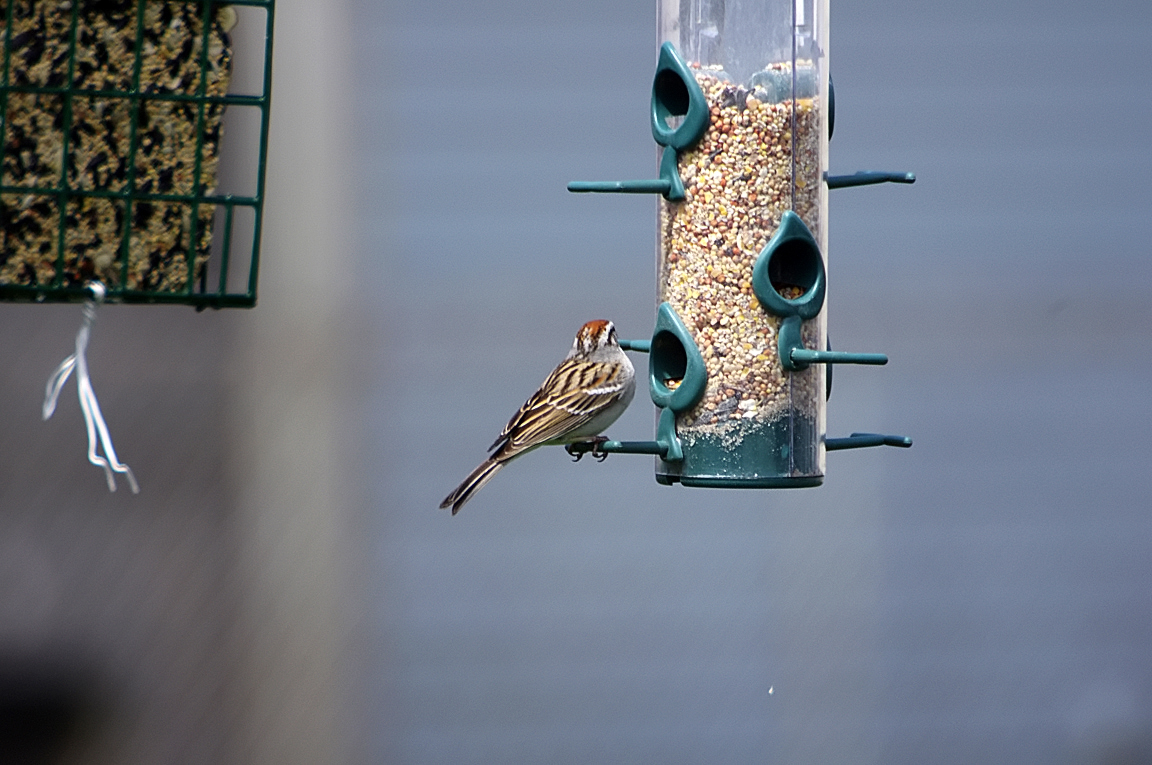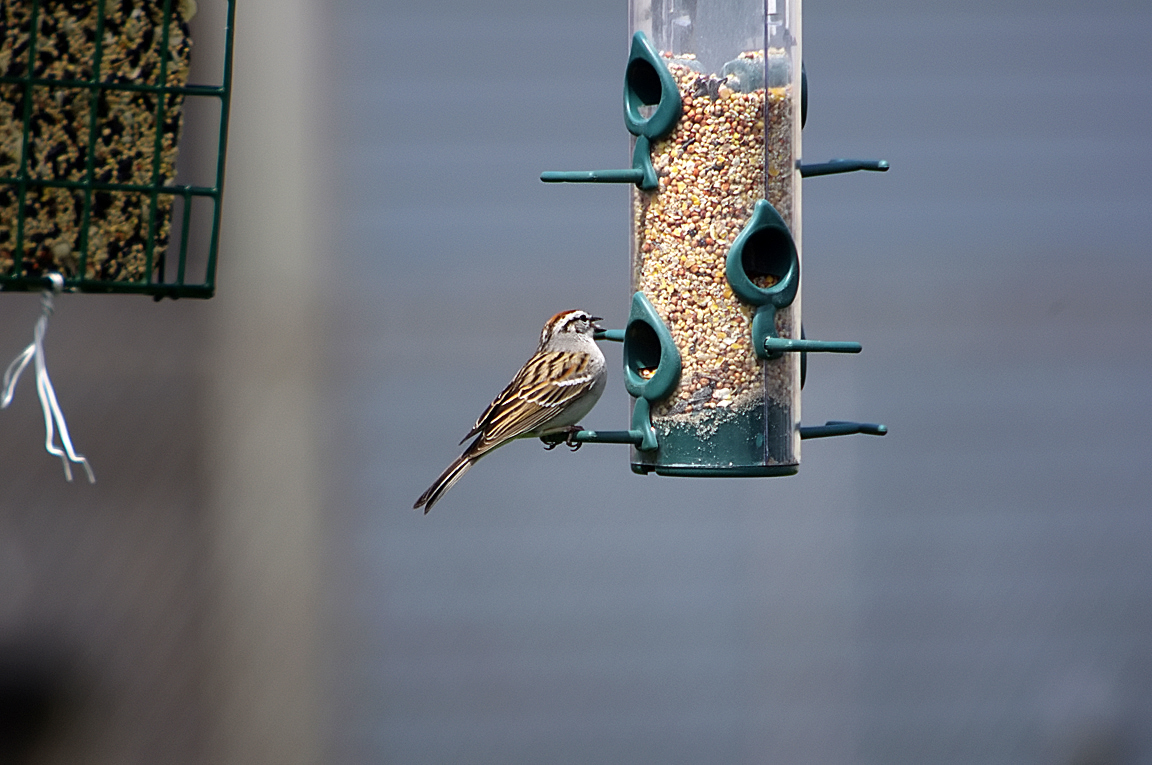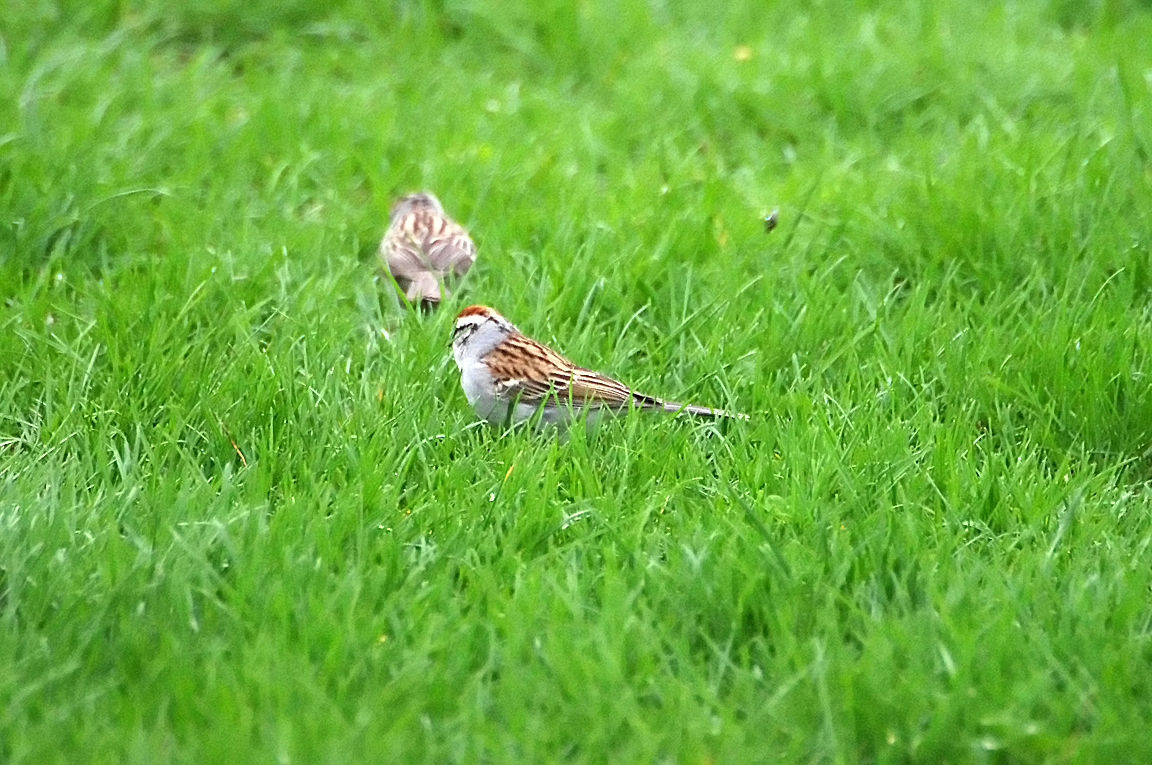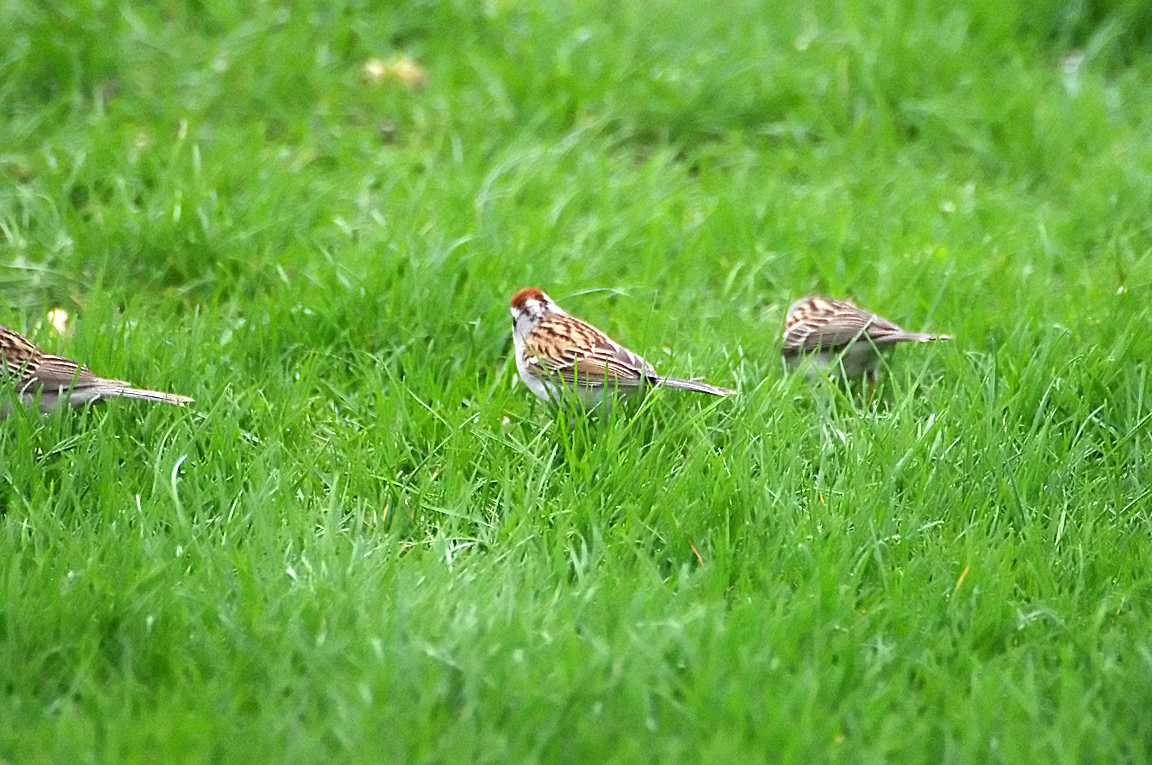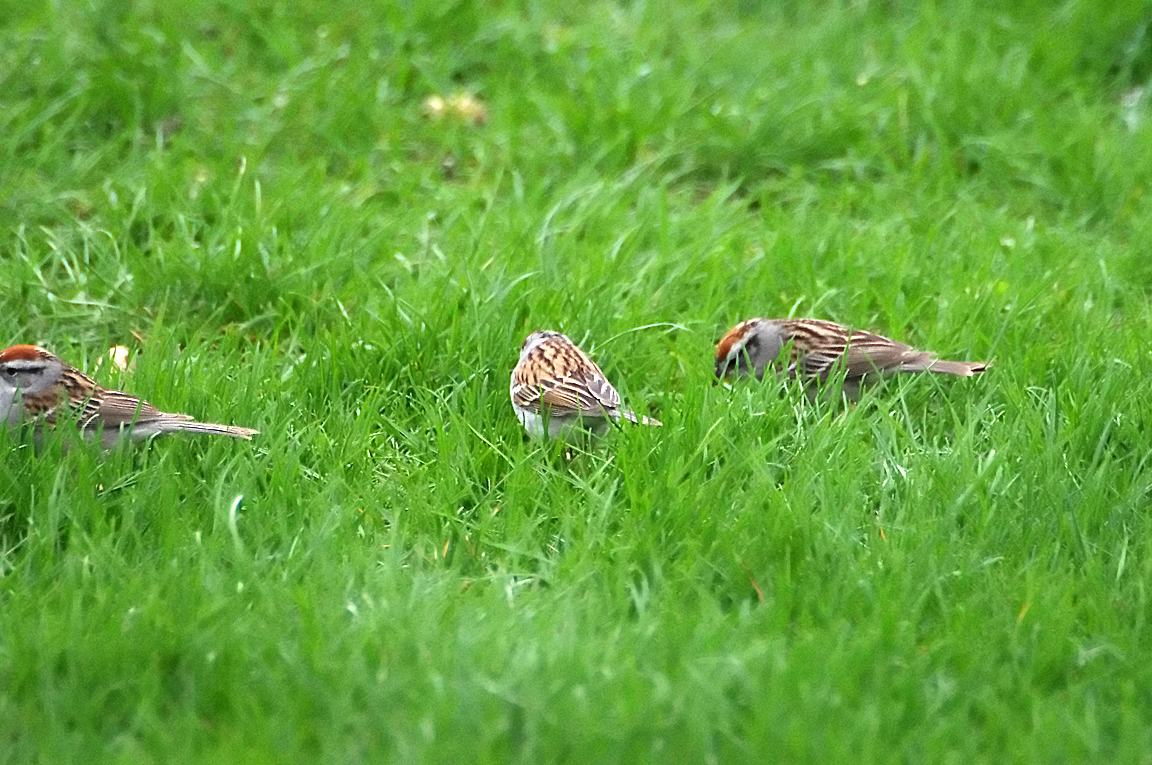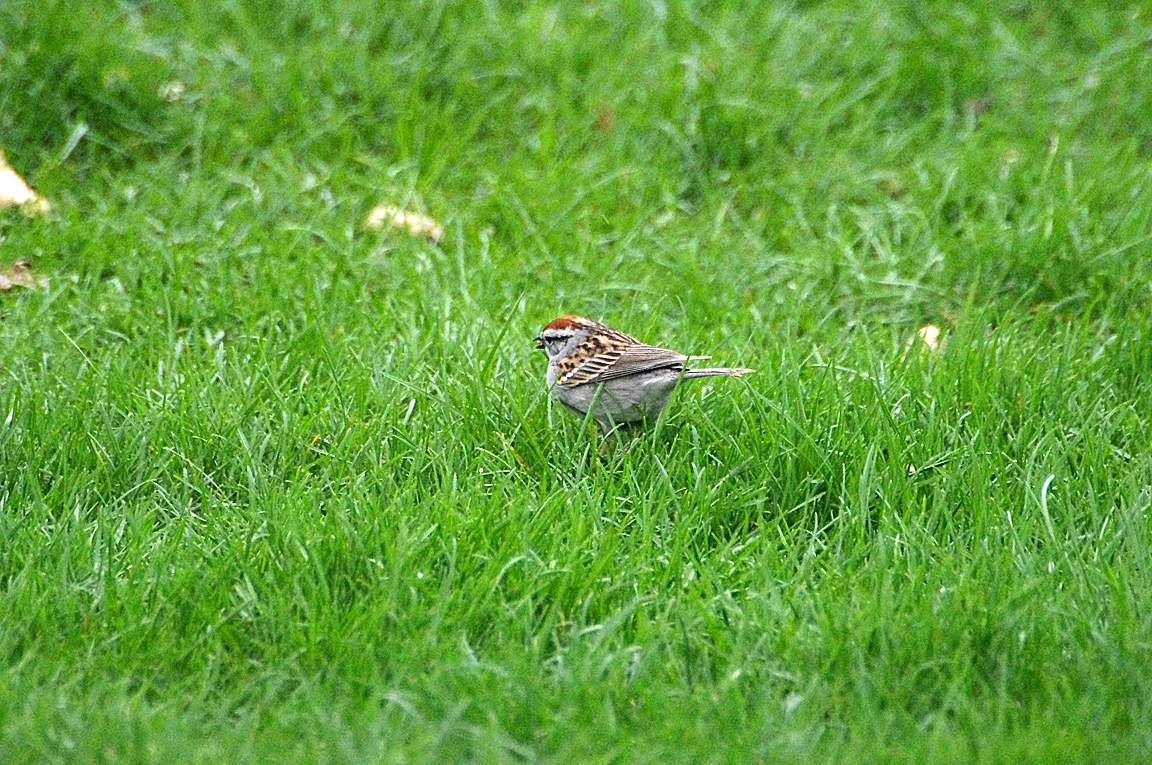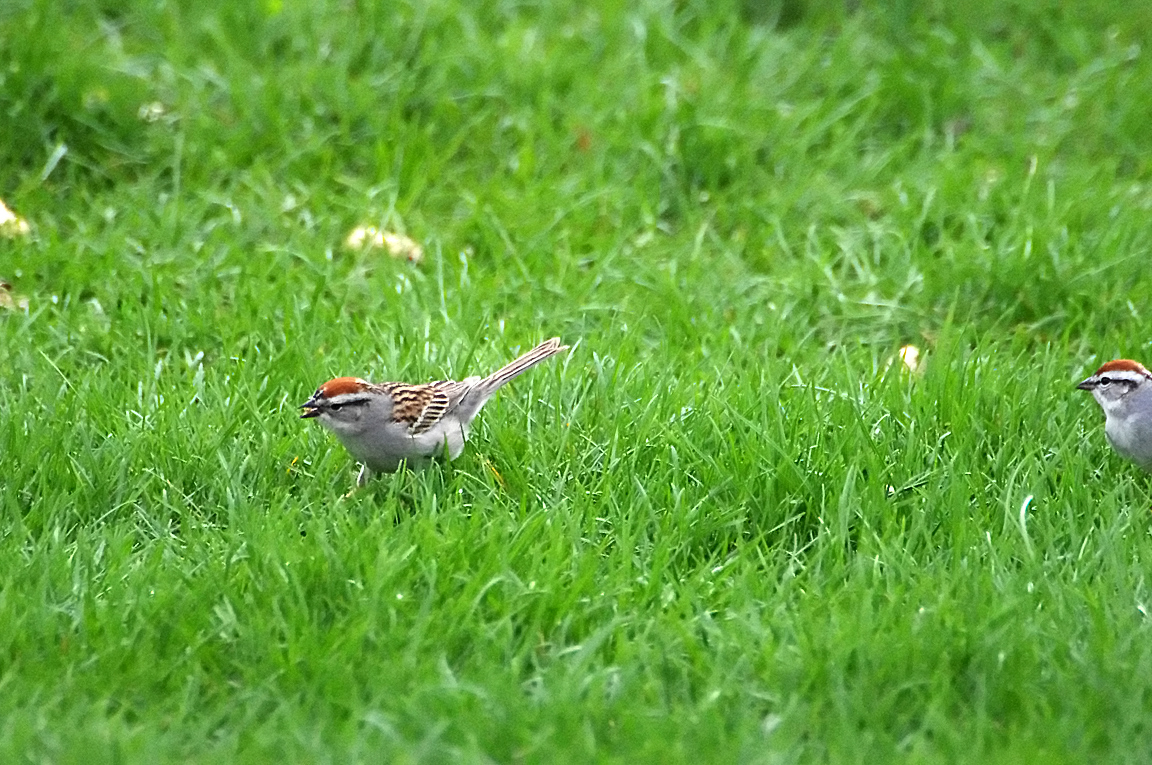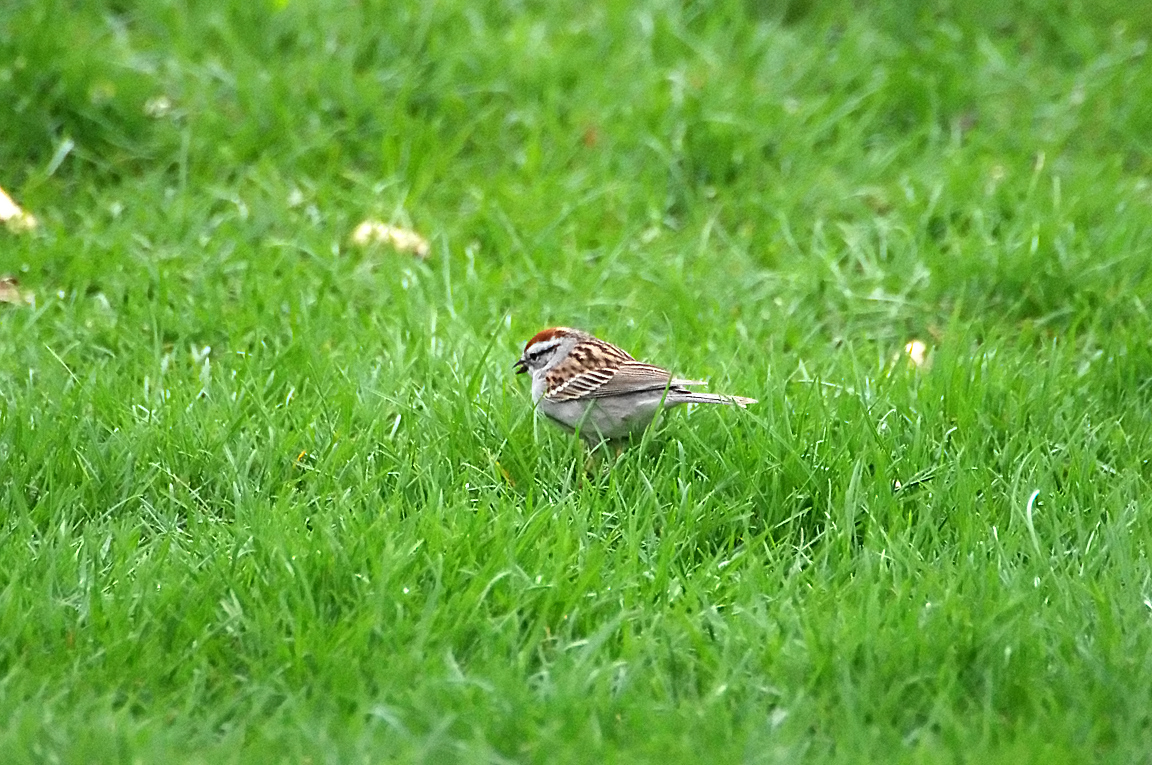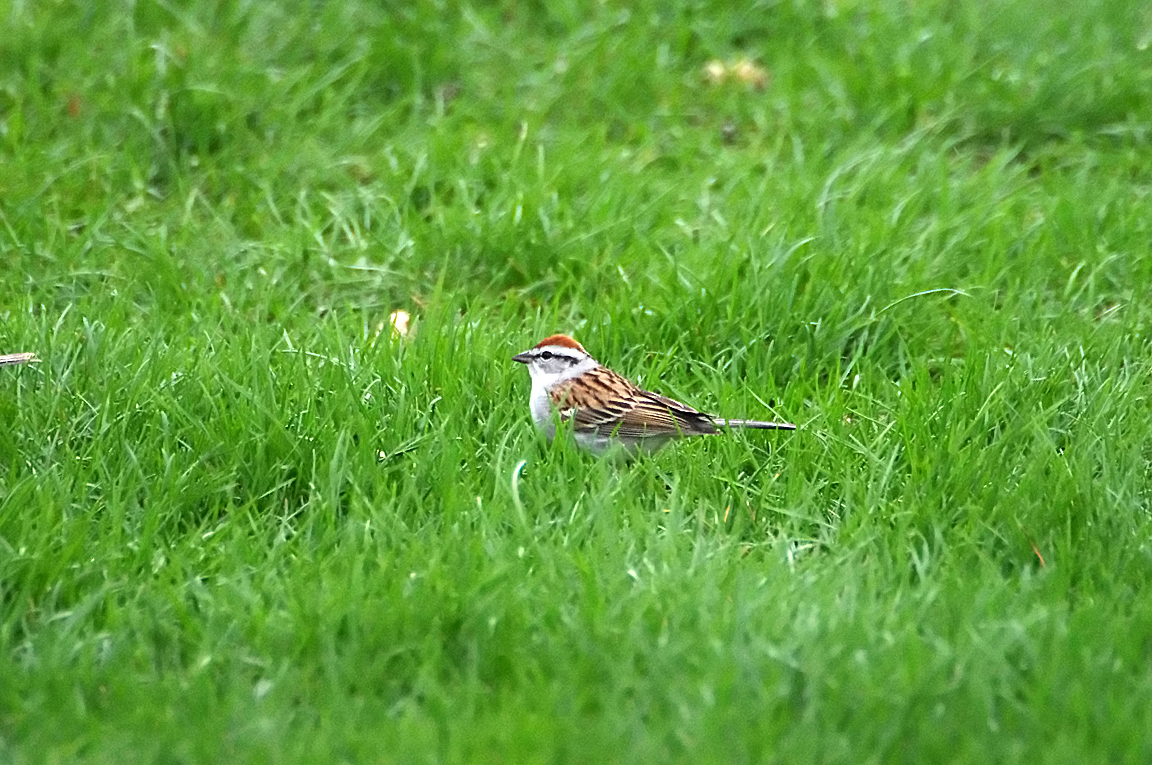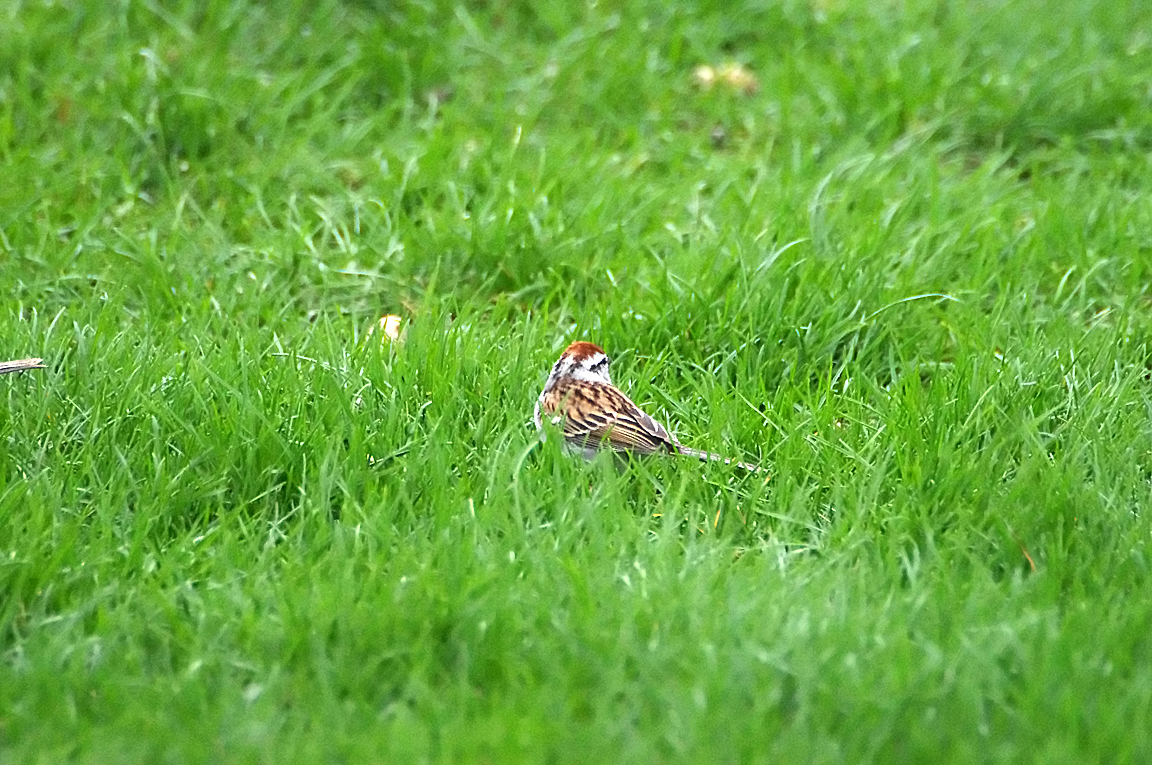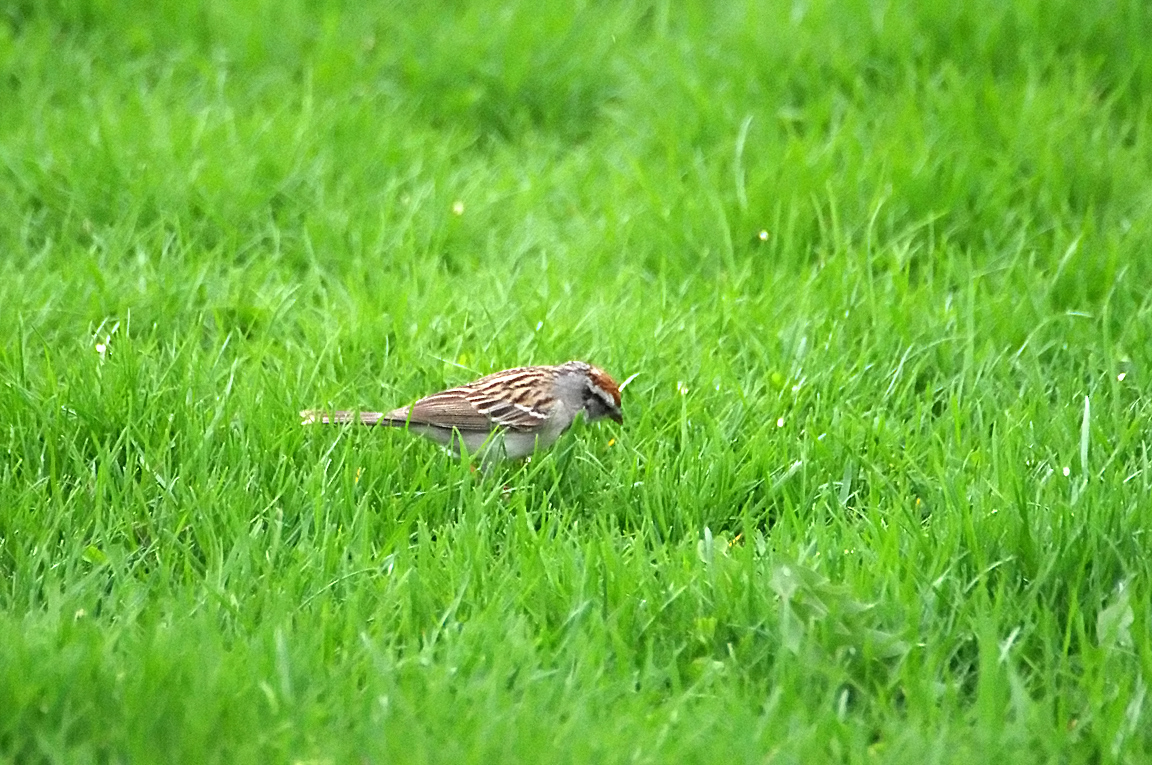|
|
|
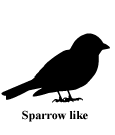 |
Chipping Sparrow
|
| Spizella passerina | |
A crisp, pretty sparrow whose bright rufous cap both provides a splash of color and makes adults fairly easy to identify. Chipping Sparrows are common across North America wherever trees are interspersed with grassy openings. Their loud, trilling songs are one of the most common sounds of spring woodlands and suburbs.
Interesting Information
-
The early naturalists had a gift for description you just don't see anymore. In 1929, Edward Forbush called the Chipping Sparrow "the little brown-capped pensioner of the dooryard and lawn, that comes about farmhouse doors to glean crumbs shaken from the tablecloth by thrifty housewives."
-
In much of the West, Chipping Sparrows disperse shortly after breeding to move to areas with better food resources. It's not unusual to see Chipping Sparrows on alpine tundra or along roadsides in open grasslands. This results in the common misperception that they bred in those areas, when really they simply moved there to molt.
-
Chipping Sparrows typically build their nests low in a shrub or tree, but every once in a while they get creative. People have found their nests among hanging strands of chili peppers, on an old-fashioned mower inside a tool shed, and on a hanging basket filled with moss.
-
The nest of the Chipping Sparrow is of such flimsy construction that light can be seen through it. It probably provides little insulation for the eggs and young.
-
The oldest known Chipping Sparrow was 11 years, 10 months old.
Description
Adult Description
Size & Shape
The Chipping Sparrow is a slender, fairly long-tailed sparrow with a medium-sized bill that is a bit small for a sparrow. Learning the shape of this classic Spizella sparrow is a key step in mastering sparrow identification.
-
Length Range: 14 cm (5.5 in)
-
Weight: 11 g (0.4 oz)
-
Size: Small (5 - 9 in)
Color Pattern
Summer Chipping Sparrows look clean and crisp, with frosty underparts, pale face, black line through the eye, topped off with a bright rusty crown. In winter, Chipping Sparrows are subdued, buff brown, with darkly streaked upperparts. The black line through the eye is still visible, and the cap is a warm but more subdued reddish brown.
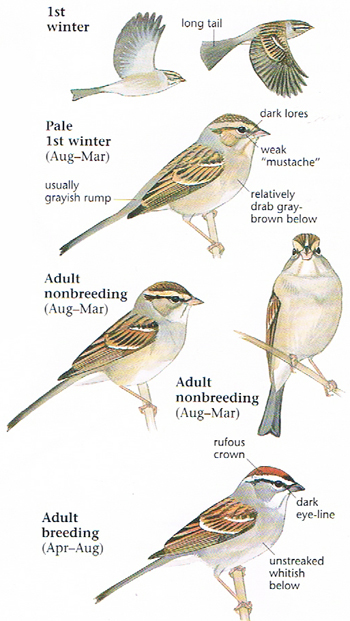
Photo taken from: The Sibley Field Guide by David Allen Sibley
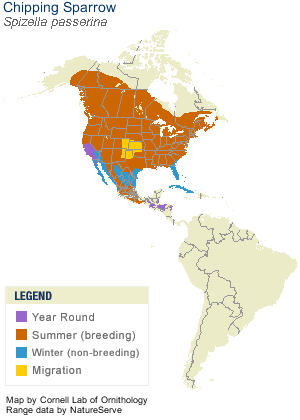
© 2003 Cornell Lab of Ornithology
|
Habitat |
|
You'll find Chipping Sparrows around trees, even though these birds spend a lot of time foraging on the ground. Look for them in grassy forests, woodlands and edges, parks and shrubby or tree-lined backyards. Chipping Sparrows seem to gravitate toward evergreens in places where these trees are available. They also use aspen, birch, oak, pecan, and eucalyptus trees. In the mountains, you can find these birds all the way up to treeline. |
|
Behavior |
|
In summer, male Chipping Sparrows defend territories against other Chipping Sparrows, but often tolerate other species as long as they don't go too near the nest. After the breeding season, Chipping Sparrows form flocks of several dozen, foraging together among grasses and at bird feeders. Their flight pattern is energetic, straight, and only slightly undulating. |
|
Food |
|
Chipping Sparrows mainly eat seeds of a great variety of grasses and herbs. During the breeding season they also hunt for protein-rich insects, and these form a large part of their summer diet. Chipping Sparrows sometimes eat small fruits such as cherries. |
Taxonomy
| Kingdom: | Animalia |
| Phylum: | Chordata |
| Subphylum: | Vertebrata |
| Class: | Aves |
| Order: | Passeriformes |
| Family: | Emberizidae |
| Genus: | Spizella |
| Species: | Spizella passerina |
| Subspecies: | Spizella passerina arizonae |
| Spizella passerina atremaeus | |
| Spizella passerina mexicana | |
| Spizella passerina passerina | |
| Spizella passerina pinetorum |
Similar Species |
|
|
Bird Sound |
|
Male Chipping Sparrows sing a long, dry trill of evenly spaced, almost mechanical-sounding chips. It's one of the most common sounds of open woods in spring - but be careful, because Dark-eyed Juncos sound very similar (though a bit more musical) and often live in the same habitats. Songs are about 3.6 seconds long on average, consisting of around 55 nearly identical chip notes in a row. |
|
Eggs look like this |
|
Photo taken from: ARCTOS Collaborative Collection Management Solution |
